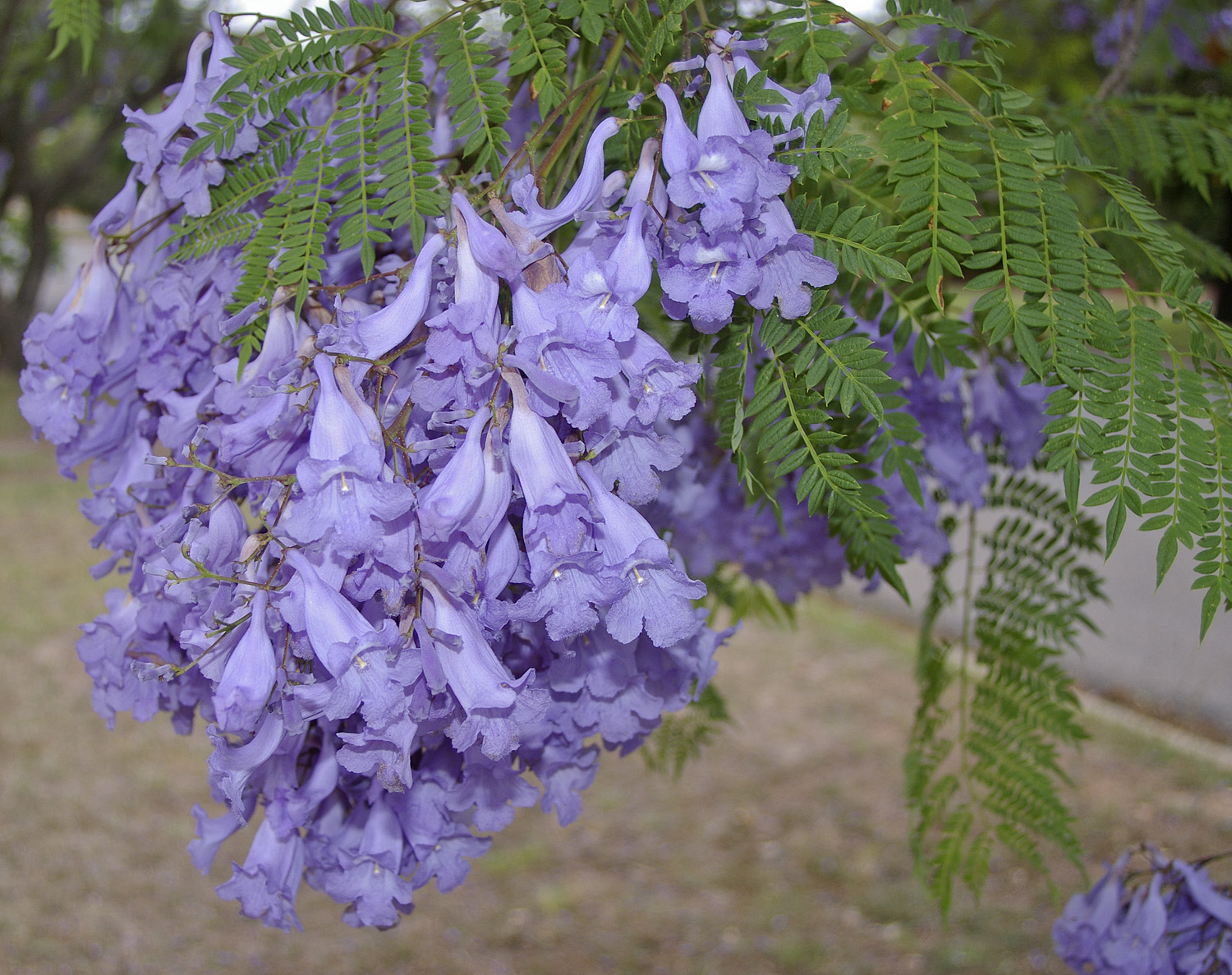Day 16: Jacarandas.
In a city full of crazy, unusual and beautiful plants, I did not expect the jacaranda to steal my heart.
In fact, I never noticed a jacaranda until after we moved. Because, like a cherry tree, jacarandas are most spectacular in bloom. Suddenly I wanted to know: What are those amazing purple trees? and with so many things in LA, I learned their name from an television show.
Blue jacaranda
Jacaranda mimosifolia

Purple panic is a term used by students in south-east Queensland for student stress during the period of late spring and early summer. The “purple” refers to the flowers of Jacaranda trees, which bloom at that time and have been extensively planted throughout that district.
–Wikipedia
Moist, well-drained soil
Full sun
South America
9b-11
They’re originally from South America. They seem to get about 30-40 feet tall, and about 20 feet across.
When it’s not flowering season, they look a little like acacias. The leaves are one central stem with a bunch of long skinny leaves coming off it, and over the winter they get to be a kind of sickly yellow green–I actually got worried they were all going to die before I could see a second bloom. They have strange dry pods that don’t seem to fall off–brown circles about the size of a large sand dollar, dangling from the ends of the branches.
The trunk tends to be overall upright, but a little twisty. The branches themselves are definitely twisty and they end in smaller and smaller twigs so that they look a bit like a root structure.
The leaves come before the flowers, which was unexpected. So you’ll see the tree start to green up and look spring-y and alive, and you’ll think, “Maybe they won’t flower this year.” Then you’ll find a blossom or two on the ground. The twigs and the leaves are thick enough that you hardly notice the first clusters of purple flowers.
It’s a slow peak. The flowers grow in clusters, almost like a lilac, but gigantic and on a tree. As the flowers bloom, the tree begins switching from all green to 50/50, then eventually they’re all purple.
And what a purple. Not the color of lilacs or wisteria, not the color of eggplant, not the royal purple of an iris. I’ve never seen this color before. It’s bluish. Almost periwinkle, but if you took out all the gray and upped the saturation. I’m becoming convinced photographs won’t catch it, you’d have to paint them to get that color.
As you make your way around the city, you see a handful of jacarandas together–I assume this is not the result of migratory tree patterns, but rather because people become obsessed with them and decide they want ALL their trees to be jaw-droppingly beautiful.
Once the trees hit peak bloom, the flowers start to come off–but the tree is still full. Flowers fall intact to the ground, and if you pick one up, the end where it attached the tree will be wet with nectar. Soon enough the ground below the tree is carpeted in purple, the tree is still dressed, and everything smells like honey. If you drive or walk over the fallen blossoms, you’ll hear them popping–air gets trapped and they pop like a bubble.
Rich with the smell and color, the sidewalks start buzzing with bees, who drink from the fallen flowers.
They don’t all bloom together, and the blooms last almost two months.
Wikipedia alleges that Kate Sessions brought jacarandas to Southern California, in the late 1800s. Thanks, Kate.